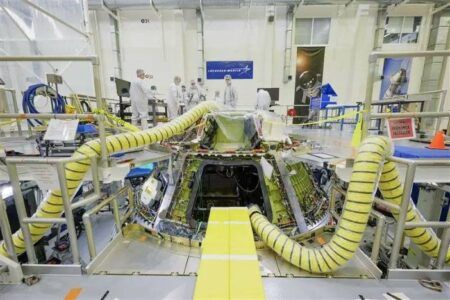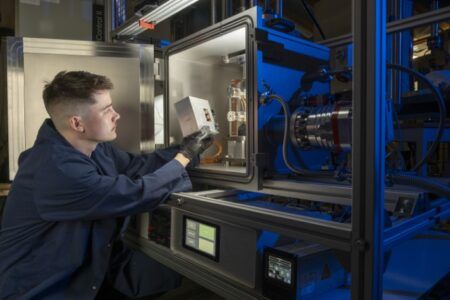On June 7 NASA astronaut Jeff Williams entered the International Space Station’s (ISS) Bigelow Expandable Activity Module (BEAM) – an expandable textile pod that was attached to the orbiting space station in April.
rn
Initially it failed to fully inflate, a condition that was put down to the long storage time (15 months) after the unit was manufactured and folded for launch. It was thought this caused excessive friction between the layers. At the end of May, BEAM was fully inflated to its full 16m3 size.
rn
NASA says Williams’s entry into the module has several objectives. “He will take an air sample, place caps on the now closed ascent vent valves, install ducting to assist in BEAM’s air circulation, retrieve deployment data sensors and manually open the tanks used for pressurization to ensure all the air has been released.
rn
“He will then install sensors over the following two days that will be used for the project’s primary task of gathering data on how an expandable habitat performs in the thermal environment of space, and how it reacts to radiation, micrometeoroids and orbital debris.”
rn
BEAM will not be used regularly; astronauts will enter the module only three to four times every year “to collect temperature, pressure and radiation data, and to assess its structural condition”.
rn
Bigelow says BEAM’s structure is constructed (inside to out) from an air barrier (bladder), structural restraint layer, micro-meteoroid and orbital debris (MMOD) layers, external multilayer insulation (MLI) and an exterior silica fiber cloth (BETA cloth).
rn
The possibility of the module puncturing is rated as “extremely low” an it will deflate slowly rather than burst if a leak develops.
rn
The habitat will remain attached to the ISS for two years, after which it will be jettisoned to re-enter and burn up in Earth’s atmosphere.
rn
See a time-lapse video of the BEAM expansion here.




